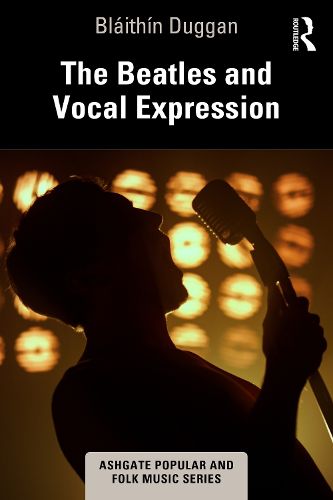Readings Newsletter
Become a Readings Member to make your shopping experience even easier.
Sign in or sign up for free!
You’re not far away from qualifying for FREE standard shipping within Australia
You’ve qualified for FREE standard shipping within Australia
The cart is loading…






The Beatles and Vocal Expression examines popular song through the topic of paralanguage - a sub-category of nonverbal communication that addresses characteristics of speech that modify meaning and convey emotion. It responds to the general consensus regarding the limitations of Western art music notation to analyse popular song, assesses paralinguistic voice qualities giving rise to expressive tropes within and across songs, and lastly addresses gaps in existing Beatles scholarship.
Taking The Beatles' UK studio albums (1963-1970), paralinguistic voice qualities are examined in relation to concepts, characteristics, metaphors, and functions of paralanguage in vocal performance. Tropes, such as rising and falling intonation on words of woe, have historical connections to performative and conversational techniques. This interdisciplinary analysis is achieved through musicology, sound studies, applied linguistics, and cultural history. The new methodology locates paralinguistic voice qualities in recordings, identifies features, shows functions, and draws aural threads within and across popular songs.
$9.00 standard shipping within Australia
FREE standard shipping within Australia for orders over $100.00
Express & International shipping calculated at checkout
Stock availability can be subject to change without notice. We recommend calling the shop or contacting our online team to check availability of low stock items. Please see our Shopping Online page for more details.
The Beatles and Vocal Expression examines popular song through the topic of paralanguage - a sub-category of nonverbal communication that addresses characteristics of speech that modify meaning and convey emotion. It responds to the general consensus regarding the limitations of Western art music notation to analyse popular song, assesses paralinguistic voice qualities giving rise to expressive tropes within and across songs, and lastly addresses gaps in existing Beatles scholarship.
Taking The Beatles' UK studio albums (1963-1970), paralinguistic voice qualities are examined in relation to concepts, characteristics, metaphors, and functions of paralanguage in vocal performance. Tropes, such as rising and falling intonation on words of woe, have historical connections to performative and conversational techniques. This interdisciplinary analysis is achieved through musicology, sound studies, applied linguistics, and cultural history. The new methodology locates paralinguistic voice qualities in recordings, identifies features, shows functions, and draws aural threads within and across popular songs.